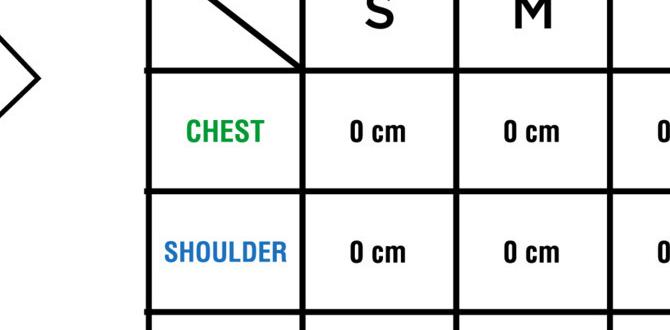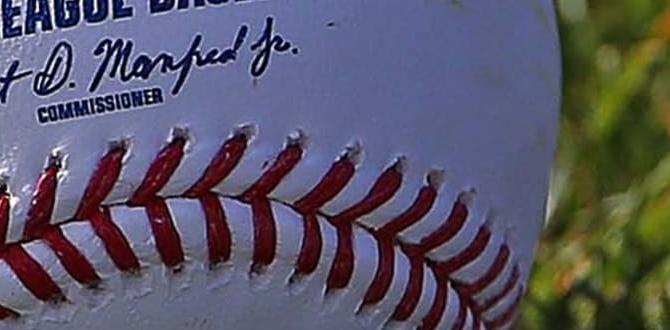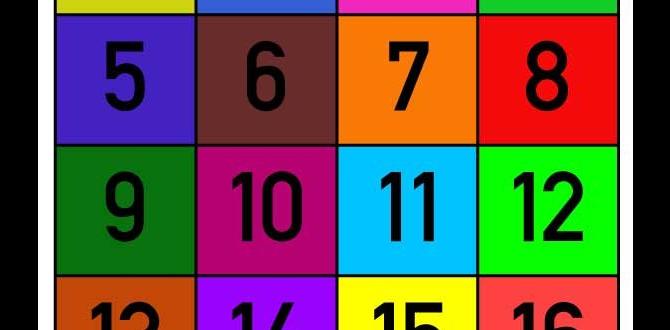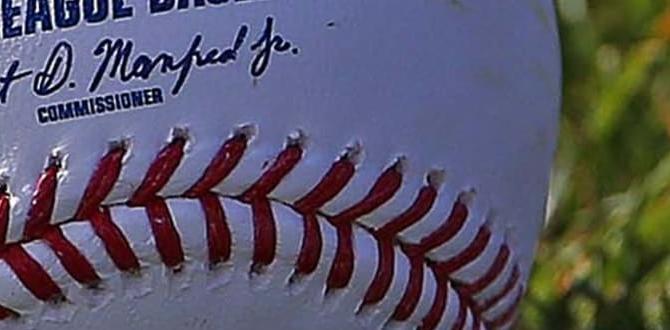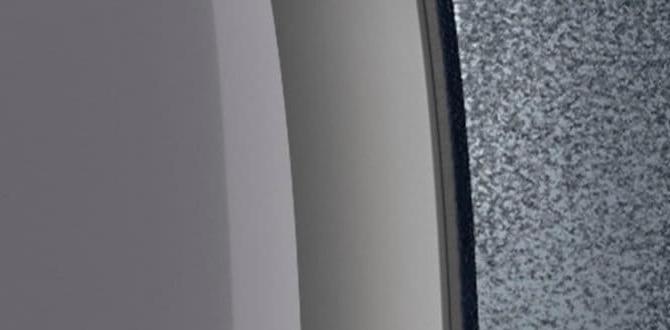Have you ever watched a baseball game and wondered how pitchers throw those amazing pitches? Grips for different baseball pitches play a key role in how the ball moves. The right grip can make a fastball soar or a curveball twist unexpectedly. But how do players figure out the best grips for each pitch?
Imagine standing on the pitcher’s mound, the crowd silent and watching. You take a deep breath and hold the ball in your hand. The way you grip it can change everything! Whether it’s a slider, changeup, or knuckleball, each pitch has its unique grip.
Here’s a fun fact: Did you know that some major league pitchers have their own secret grips? They spend years perfecting them to throw the ball exactly how they want. As we dive into this article, you’ll discover tips and tricks to master grips for different baseball pitches. Get ready to impress your friends next time you’re on the field!
Grips For Different Baseball Pitches: Master Your Technique
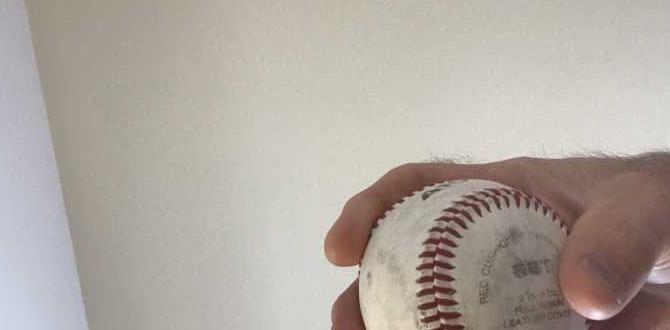
Grips for Different Baseball Pitches
Choosing the right grip is crucial for baseball pitchers. Each pitch—fastball, curveball, or slider—requires a different grip to achieve success. For a fastball, a solid hold on the seams helps with speed. A curveball needs a finger placement on top for that perfect spin. Did you know that even a slight change in grip can change the ball’s path? Learning these grips can make all the difference in your game. Are you ready to improve your pitch?Fastball Grips
Explanation of twoseam and fourseam fastball grips. Tips for achieving optimal speed and accuracy.Fastball grips can change how fast and accurately the ball flies. For a two-seam fastball, hold the ball with your index and middle fingers along the seams. This grip gives the ball movement, almost like it’s dancing toward the batter. With a four-seam fastball, position your fingers across the seams for a straight shot. This grip helps the ball reach speeds up to 100 mph—as fast as a cheetah chasing its snack!
To boost speed, focus on a strong follow-through. Always aim your release point in front of you for better accuracy. Think of it like tossing a pizza—get it just right, and everyone wants a slice!
| Grip Type | Fingers Position | Ball Flight |
|---|---|---|
| Two-Seam | Index & Middle Along Seams | Dancing Movement |
| Four-Seam | Fingers Across Seams | Straight Shot |
Changeup Grips
Variations of changeup grips: circle change and palm change. Importance of deception and placement in execution.Changeups are special pitches that confuse hitters. Two popular changeup grips are the circle change and the palm change. The circle change uses an “O” shape with the thumb on one side and two fingers on the ball, making it hard to hit. The palm change places the ball deep in the palm, creating a slower pitch. Deception and arm speed are key in making these pitches effective. If a pitcher hides the ball well, batters can swing and miss.
What are the Different Variations of Changeup Grips?
Changeup grips mostly include the circle change and palm change. The circle change is held in a circular shape with two fingers, while the palm change sits deeper in the palm for added deception.
Key Points:
- Circle Change: Confuses hitters with a slower speed.
- Palm Change: Hides the ball deep for better results.
- Deception: Key to making the pitch work.
Specialty Pitches Grips
Description of knuckleball and splitter grips. Unique challenges and techniques for mastering these pitches.Knuckleballs and splitters are special pitches that can fool batters. A knuckleball grip uses fingertips to hold the ball with no spin. This makes it dance in the air. It’s tricky because it can be hard to control. The splitter grip involves holding the ball with the index and middle fingers closer together. This pitch drops suddenly, making it tough for hitters to connect.
Mastering these grips takes practice. Here are some challenges:
- Knuckleball: Hard to control but can be very effective.
- Splitter: Needs precise finger placement for best results.
What makes knuckleball and splitter pitches special?
These pitches add variety and surprise in baseball. They keep batters guessing and can change the game’s outcome.
Grip Pressure and Finger Placement
Importance of grip pressure for different pitch types. How finger placement can influence pitch effectiveness.Grip pressure is like the secret sauce for throwing baseball pitches. Too tight, and the ball might slip away; too loose, and it could end up in a neighbor’s garden! Finding that perfect squeeze is key to making your pitch magical. Finger placement is equally important. Where you place your fingers can change the ball’s spin and speed. Just think, a little tweak could transform your fastball into a blazing comet!
| Pitch Type | Ideal Grip Pressure | Finger Placement |
|---|---|---|
| Fastball | Firm | Index and middle finger on the seams |
| Curveball | Light to Medium | Fingers on the top seam |
| Changeup | Relaxed | Fingers spread apart |
Just like pizza, the right ingredients make all the difference in pitching! So, keep practicing those grips and watch your skills fly!
Training Techniques for Mastering Grips
Drills and exercises to refine pitch grips. Importance of consistent practice and feedback.To master grips for different baseball pitches, practice is key. Drills can help players feel comfortable with each grip. Regular feedback from a coach or a teammate is also important. This helps players understand what improvements are needed. Here are some ways to practice:
- Use a tennis ball to practice grips without the stress of pitching.
- Record your throwing motions to see how your grip affects the pitch.
- Practice with different props, like weighted balls, to build strength in your hand.
Playing catch with a partner can make this training fun. Remember, getting better takes time and effort!
How can I improve my pitch grip?
To improve your pitch grip, practice regularly and get feedback. Drills like working with a tennis ball or recording your throws can help.
Conclusion
In conclusion, understanding grips for different baseball pitches is essential for your success on the field. Each grip alters how the ball moves. Experiment with various grips to find what works best for you. Practice regularly to sharpen your skills. For more tips and techniques, explore additional resources or ask your coach for guidance to improve your pitching game.FAQs
What Are The Fundamental Differences In Grip Technique For A Fastball Compared To A Curveball?To throw a fastball, you use your index and middle fingers on top of the ball. Your thumb sits underneath it for support. For a curveball, you grip the ball with your index finger and thumb, while your middle finger plays along the side. This helps you spin the ball and makes it curve. So, the main difference is where your fingers go on the ball.
How Does The Grip Of A Slider Pitch Affect Its Movement And Speed?The grip of a slider pitch is really important. When you hold the ball with your fingers close together, it spins differently. This makes the ball move sideways more. If you grip it tightly, it can go faster. So, your grip helps change how the ball moves and how fast it goes!
What Finger Placements Are Typically Recommended For Effective Changeup Execution?To throw a good changeup, you will want to hold the ball with your index and middle fingers on top. Place your ring finger underneath the ball for support. Make sure your thumb is behind the ball for balance. This grip helps slow down your pitch while looking like a fastball. Practice this grip, and you’ll get better at throwing changeups!
How Can The Grip On A Knuckleball Influence Its Unpredictability And Break?The way you hold a knuckleball changes how it moves. If you grip it lightly, it will spin less. This makes the ball wobble and go in unexpected ways. The tightness of your grip can also make the ball break, or drop, suddenly. So, how you hold the ball really affects its surprise factor!
What Common Grip Mistakes Do Pitchers Make When Throwing Off-Speed Pitches, And How Can They Be Corrected?One common mistake is holding the ball too tightly. When you grip it too hard, your pitch can go wild. Try to relax your hand and fingers. Another mistake is not using the right fingers on the seams. Make sure you place your fingers correctly on the ball’s seams. Practice these tips, and you’ll get better at throwing off-speed pitches!

